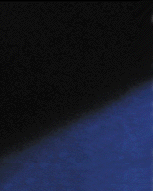|
|
|
| Gukak Museum: Discover Traditional Korean Music |
| Korean traditional music or 'Gukak', as developed through out Korean history, can still be heard and appreciated today. Of course some musical styles and instruments were introduced into Korea from China as a natural result of the close political and geographical ties between the two regions.
However, Korea has also developed many of it's own unique musical forms and instruments. The various classes of people developed many musical styles that reflected the experiences of their daily lives.
|
|
 |
The Gukak Museum exhibits many ancient musical instruments and documents so that we can understand the history of Korean music. The museum is located on the 2nd floor of the National Institute of Korean Traditional Music, situated in Seo Cho Ku, Yang Jae- Dong, and Seoul. There are exhibition halls for Music History, Traditional Instruments, Masters of Music, Ancient Documents, and for Musical Sound and Image.
On the first floor of the main hall, traditional musical instruments and restored ancient musical instruments are exhibited. You can see the very instruments with which ancient musicians played Royal Music for the Korean Court. Also on display are instruments, which were used to play at ceremonies such as royal weddings, and ancestor memorial services. The exhibition hall contains about 50 Korean instruments along with 140 musical instruments from Asia and Africa. In the hall devoted to Masters of Music you can learn about Koreas most important ancient musicians and view some of their personal items such as books and cherished musical instruments. There are about 50 different items on display in the Masters of Music hall.
The Musical Sound and Image hall provides you the opportunity to hear and see many traditional instruments being performed on CD or videotape.
As for the articles in this hall, there are 67 cassettes, 13 video segments, and 400 CD's. In the exhibition hall for Ancient Musical Documents, you can view articles related to ancient dance, such as drawings and sheet music. There are also documents that describe national ceremonies and events in Korean history. The hall of Music History displays a number of pictures, musical documents, and materials for musical performances in different periods of history.
On the third floor there is a special hall dedicated to the work of Kim Gisu (1917-1986) who's pen name was Jukheon. 1300 articles such as books of traditional music, and instruments used by the deceased musician are on display in this hall. Jukheon is considered to have contributed greatly to the preservation of traditional music in modern Korea.
Opening hours 09:00~17:00 (open until 18:00 from May to October) Closed on Mondays
How to get there Take subway line no. 3 to Nambu Bus Terminal and exit through gate 5. Take the local town bus no. 10-7 or 10-9 and get off at the National Center for Traditional Korean Performing Arts.
Tel 02-580-¡©3078
Admission fee free
|
|
|
|
|
|
| 04-08-2001 |
|
|
|
|

